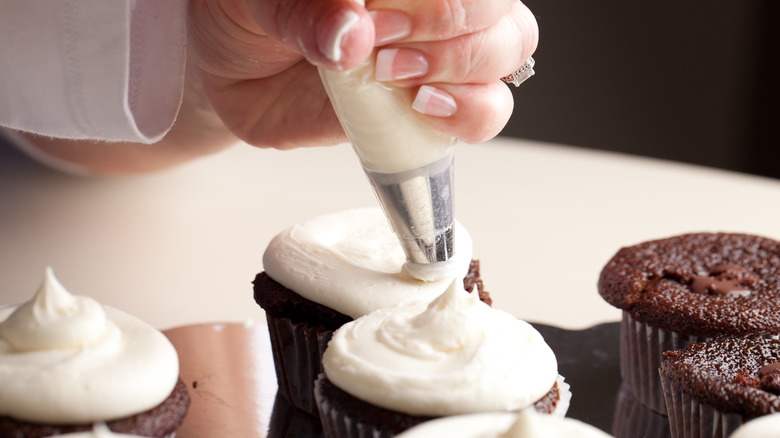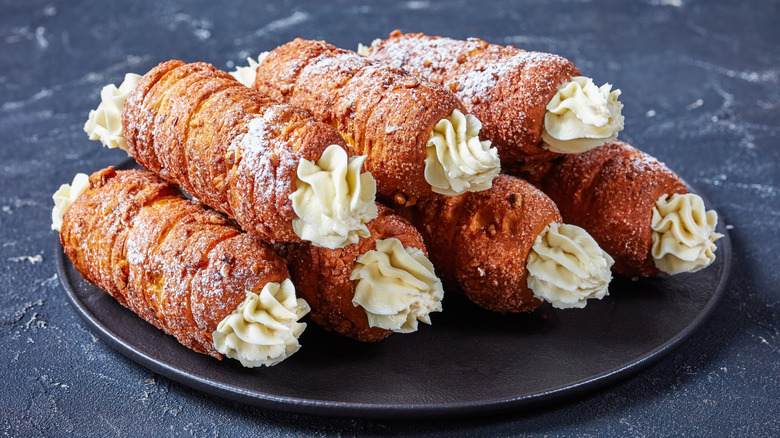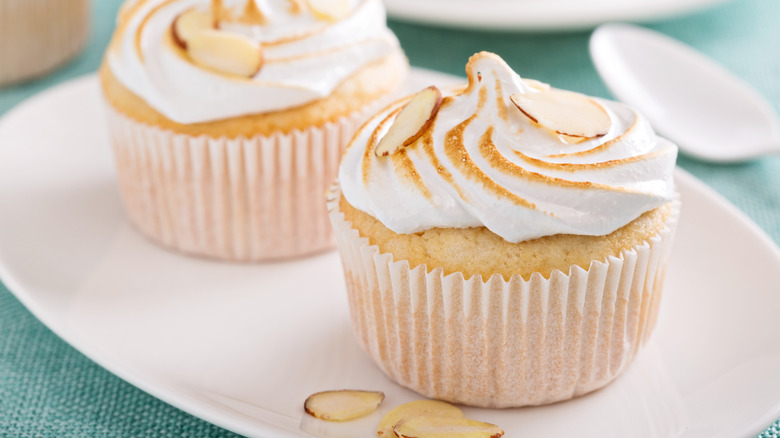German Buttercream Vs. Swiss: What's The Difference?
No one expects cakes without frosting. It seems wrong to imagine going to all that trouble to bake your favorite cake, whether it be a classic yellow cake recipe or a chocolate layered cake recipe, to not top it off with a decorative, delicious swath of frosting. Frosting is — in its simplest form — a mix of sugar and liquids whipped up into hundreds of flavors, colors, and textures. Idiomation claims that the first frosting recipe was published in 1769 in the novel "The Experienced English Housekeeper," but it is believed that bakers had been using the sweet topping 200 years or so before that to give cakes an attractive glaze and extend their shelf life with the preserving layer of sugar.
But, by far, one of the most beloved frostings invented has been the buttercream frosting with its extra buttery flavor and thick fluffy texture. Cheryl's credits buttercream's popularity to the innovation of German bakers during the early 20th century. The frosting is so dense and stable that it can hold its shape, making it perfect for decoration, and its incredibly rich flavor makes people want to lap it up. There are also tons of variations of buttercream all made with different ingredients and textures. A perfect example of how diverse buttercream frostings can be is by comparing German and Swiss buttercream.
What is German buttercream?
You'll never guess where German buttercream was invented. ... All jokes aside, German buttercream is truly a world-class frosting. According to King Arthur Baking, it's as rich as they come, but with noticeably less sweetness than American buttercream because it uses less sugar and relies on a custard base for a silky texture and the pure flavor of vanilla to shine.
This vanilla custard, or pudding, is the key to the German style of frosting and is made from scratch using milk, sugar, egg yolks, vanilla, then thickened using cornstarch, flour, and salt (via Hanielas). The process might take a bit longer than other buttercream recipes, but the wait is worth it. After the custard has been finished, it is time to put the "butter" in our buttercream and whip everything together. Serious Eats states that the combination of vanilla pudding and whipped butter is what gives the German buttercream its truly untouchable levity, smooth texture, and delicate sweetness.
What is Swiss buttercream?
Unlike German buttercream, Swiss buttercream does not use a custard base. Instead, Swiss buttercream most closely resembles a meringue and takes a lot less time and ingredients to make. According to Hanielas, Swiss buttercream only needs five ingredients: egg whites, sugar, salt, butter, and vanilla extract. The smooth meringue-like texture is what allows this buttercream to form light, stiff peaks and hold its shape for decoration.
Swiss buttercream takes a little prep work, but is easier than other styles of meringue. Simply whip your egg whites with sugar — cooking over heat with a double boiler — and thicken with butter, says Hanielas, which also claims that it is super easy to flavor your Swiss buttercream. Add extracts, fruit purees, thick chocolate, or caramel sauce, dulce de leche, coffee, and liqueurs once you've finished whipping everything else up, making Swiss buttercream the perfect choice for any fun-flavored frosting ideas you might have.


